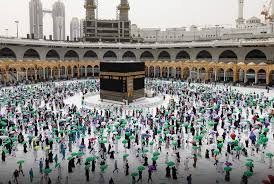The Hajj Journey
Ihram
Ihram is the sacred state pilgrims enter during Hajj and Umrah, marked by specific rituals and attire. Pilgrims wear simple white garments, symbolizing purity and equality, as they declare their intention for the pilgrimage. Ihram imposes restrictions, fostering self-discipline and spiritual focus, including refraining from certain activities like cutting hair. This consecrated state signifies a commitment to the sacred journey, enhancing the transformative experience of the pilgrimage.
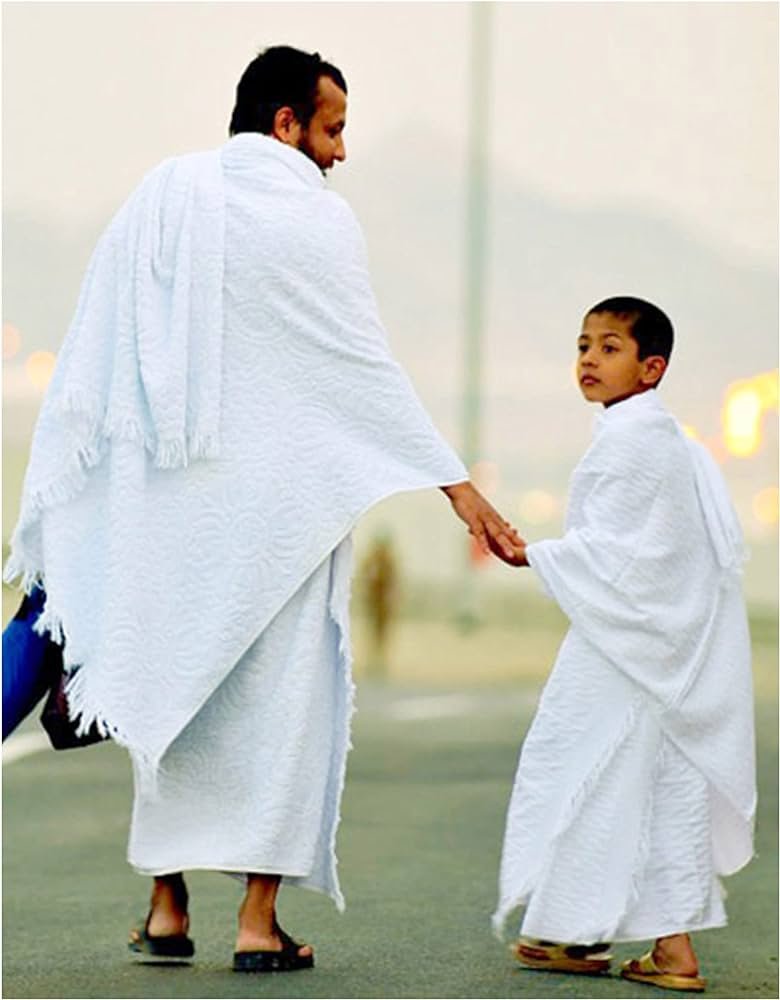
Tawaf Al-Qudum
Tawaf Al-Qudum is the circumambulation performed upon arriving in Mecca for Hajj or Umrah. Pilgrims, upon reaching the Grand Mosque, conduct this initial Tawaf to honor the sacred Kaaba. It signifies the commencement of their pilgrimage, emphasizing the spiritual significance of entering the holy precincts. This act reflects the deep connection pilgrims seek with Allah and the unity of the Muslim community as they embark on their sacred journey.
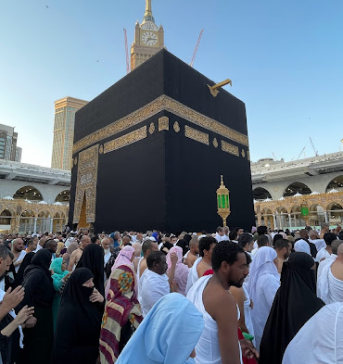
Sa’i between Safa and Marwa
Sa’i, the ritual of walking between the hills of Safa and Marwa, is a significant and symbolic act performed by pilgrims during the Hajj and Umrah pilgrimage at the Grand Mosque of Makkah. This ritual commemorates the journey of Hagar, the wife of Prophet Ibrahim, as she ran between these hills in search of water for her son, Isma’il. Pilgrims follow in her footsteps, covering the distance seven times, reflecting endurance and faith. The well-marked pathway, enclosed in a structure, facilitates this ritual, allowing worshippers to engage in this act of devotion as an integral part of their pilgrimage experience, connecting with the rich history of Islam and expressing their commitment to faith.
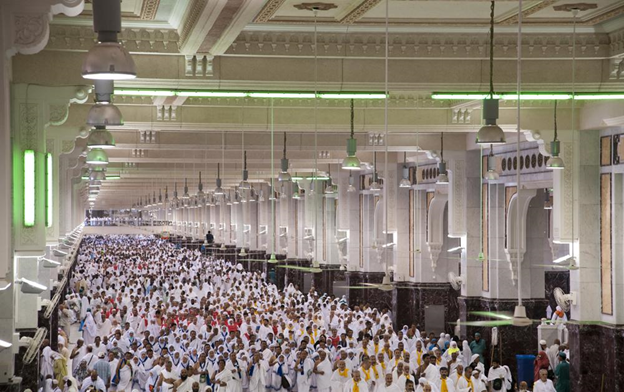
Mina (the Day of Tarwiyah)
Mina, on the Day of Tarwiyah, marks the beginning of Hajj rituals. Pilgrims enter a state of consecration, donning the Ihram attire, and proceed to Mina to spend the night in prayer.
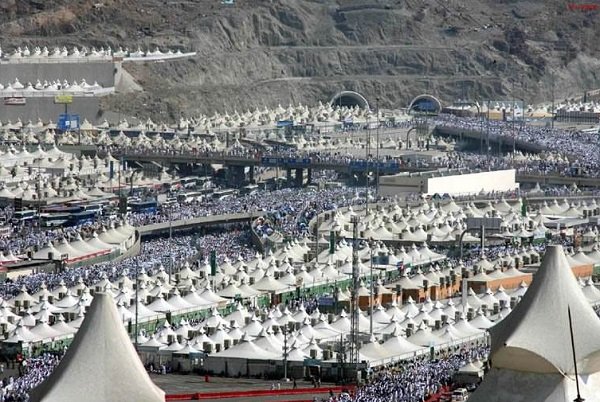
Arafah (Day of the Greater Hajj)
Arafah, the Day of the Greater Hajj, holds immense significance during Hajj. Pilgrims gather on the plains of Arafat, symbolizing the ultimate unity of the Muslim ummah. On this day, heartfelt prayers and supplications are made, seeking forgiveness and blessings. Standing in worship, pilgrims emulate the profound spiritual state of devotion and humility. Arafah marks a pivotal moment in the pilgrimage, emphasizing repentance and the mercy of Allah.
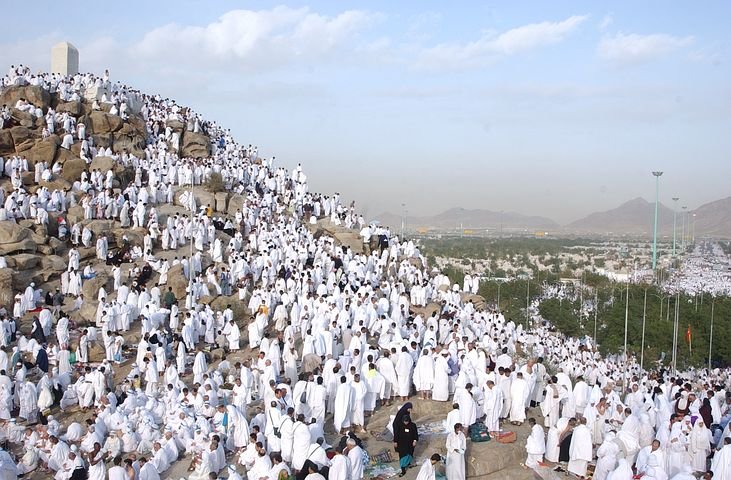
Muzdalifah
Muzdalifah is a significant location in the Hajj pilgrimage, situated between Arafat and Mina. Pilgrims spend the night here during Hajj, engaging in prayers and collecting pebbles for the symbolic Stoning of the Devil ritual. The plain holds historical and spiritual significance, as it is believed to be the place where the Prophet Muhammad prayed and rested during his Hajj. Pilgrims reflect on the essence of sacrifice and unity, and the gathering in Muzdalifah represents a crucial part of the transformative journey, emphasizing humility and devotion.
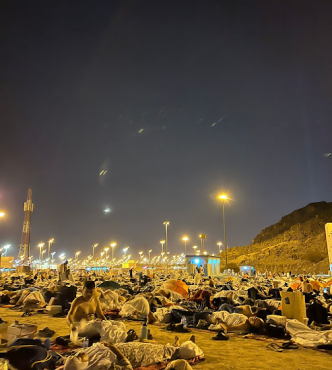
Pelt Jamrat Al-Aqabah
The ritual of pelting Jamrat Al-Aqabah is an important aspect of the Hajj pilgrimage in Mina, near Makkah. Pilgrims participate in the Stoning of the Devil by throwing pebbles at the wall that represents Satan. Jamrat Al-Aqabah is the last and largest pillar symbolizing the final challenge faced by Prophet Ibrahim during his pilgrimage. Pilgrims perform this act on the 10th day of Dhul Hijjah as a symbolic rejection of temptation and a demonstration of their commitment to resisting evil. The structured and organized stoning ritual is designed to ensure the safety and smooth flow of this significant Hajj rite, allowing pilgrims to fulfill their religious duties with devotion and unity.
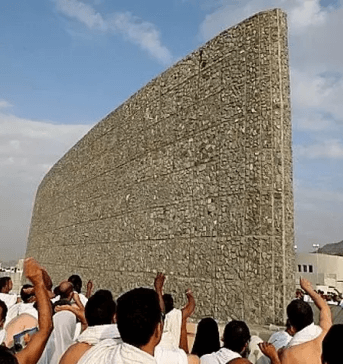
Adahi
Adahi refers to the ritual sacrifice performed by Muslims during the Eid al-Adha festival, also known as the Festival of Sacrifice. This act commemorates the willingness of Prophet Ibrahim to sacrifice his son as an act of obedience to God, who provided a ram as a substitute.

Tawaf Al-Ifada
Tawaf Al-Ifadah is a ritual during the Hajj pilgrimage, specifically performed after the symbolic Stoning of the Devil in Mina. Pilgrims proceed to Mecca to complete Tawaf Al-Ifadah around the Kaaba.
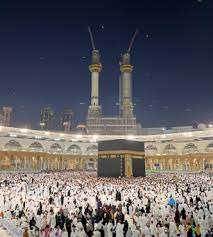
Shave Hair or Trim
Shaving or trimming the hair is a ritual associated with the conclusion of Hajj or Umrah. Pilgrims, especially men, engage in this act as part of the Tawaf al-Ifadah during Hajj. After pelting the pillars symbolizing the Devil in Mina, pilgrims proceed to Mecca, where they perform Tawaf al-Ifadah and then have the option to either shave their heads completely or trim a portion of their hair.
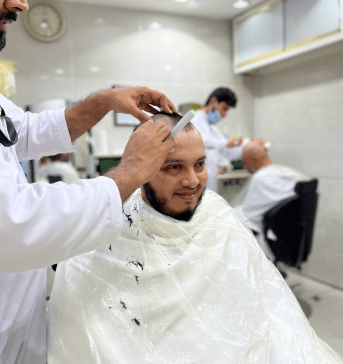
Tawaf Al-Wadaa
Tawaf Al-Wadaa, or the Farewell Tawaf, is the final circumambulation around the Kaaba performed by pilgrims before leaving Mecca. It symbolizes bidding farewell to the sacred city, marking the conclusion of the Hajj pilgrimage.
